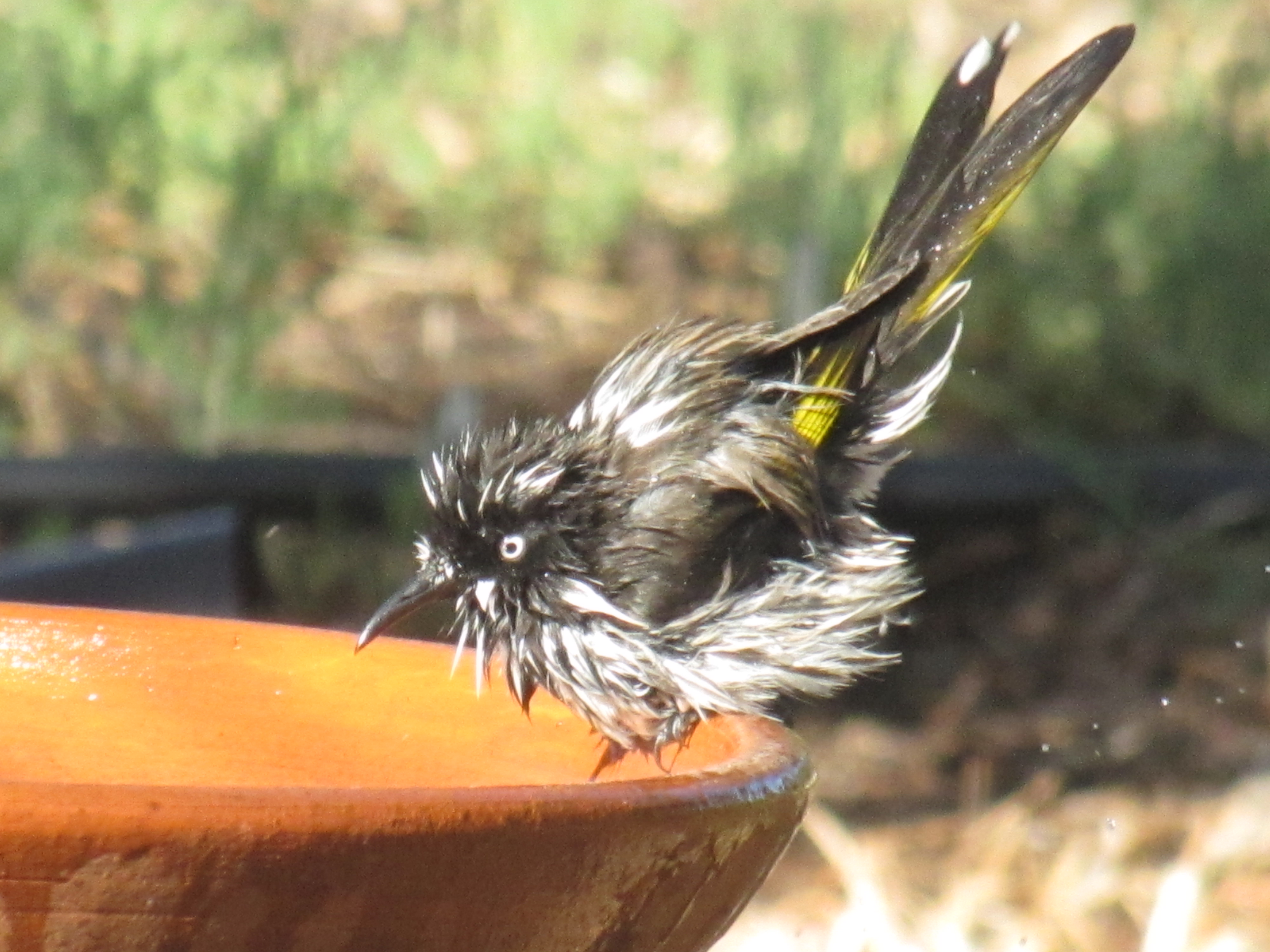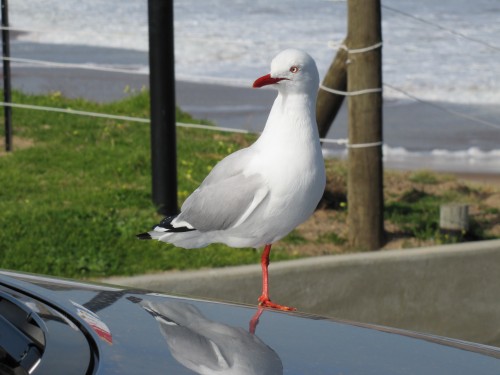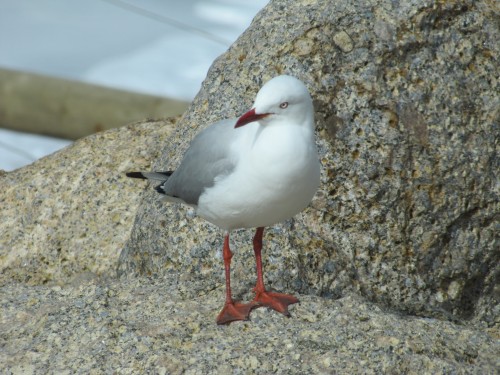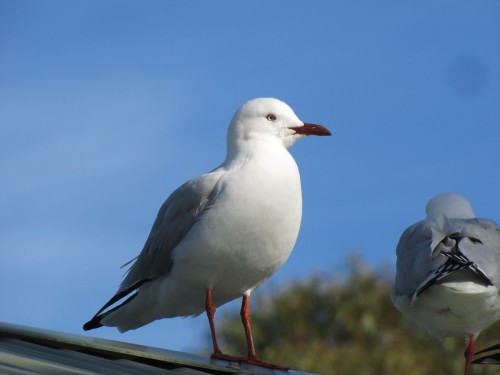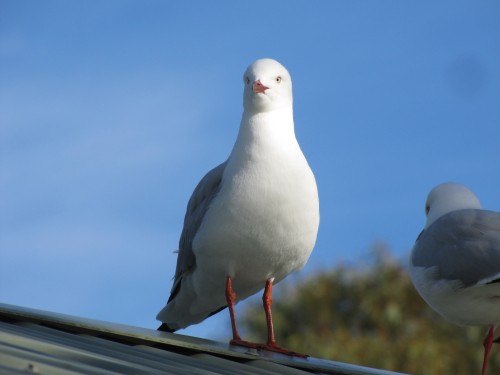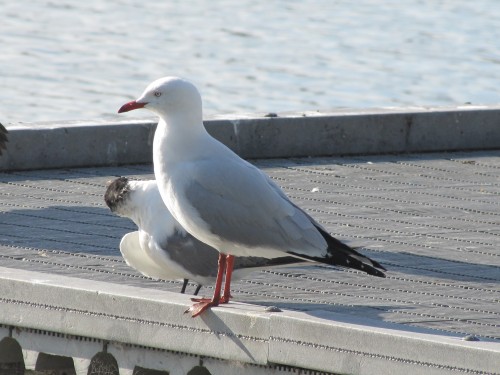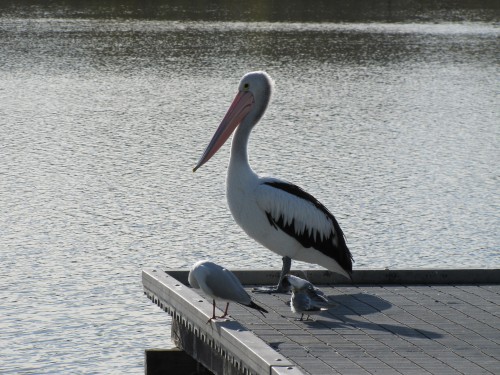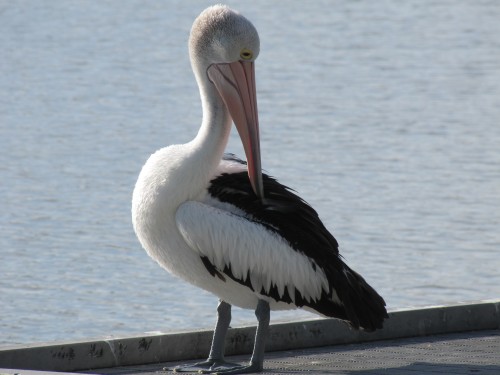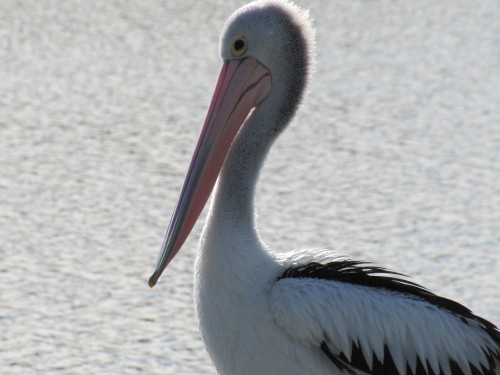Let’s all have a morning bath
Earlier this week it was rather warm. On most days we have some birds come to either have a bath, or have a drink. Many do both. Some just sit in the water, especially on very hot days.
On Tuesday of this week I was amazed at the procession of birds coming to drink and bathe. I was having my breakfast and it wasn’t yet very hot. This following is a list of species observed in a ten minute period:
New Holland Honeyeaters – about 12
White-plumed Honeyeaters – 2
Singing Honeyeaters – 2
Red Wattlebirds – 2
Crested Pigeon – 1
Spotted Turtledove – 1
Yellow Thornbill – 1
House sparrow – 10
Common Starling – 6
Australian Magpie Lark – 1
Superb fairy-wren – 3
Other species nearby:
Australian Magpie
White-browed Babblers
Willie Wagtail
The New Holland Honeyeaters caused the greatest kerfuffle; water went absolutely everywhere. I managed to capture this series of photos of one individual getting totally soaked.
Now I’ll have to get a bucket of rainwater and refill the bird bath.
Some of the photos shown here on Trevor’s Birding can now be purchased on tee shirts, coffee mugs, stationary and a large range of other items. Go to Trevor’s Photos site here.
Beautiful Superb Fairy-wren
This morning I was sitting in our sun room doing some reading. I looked up and saw the male Superb Fairy-wren shown above and grabbed the camera before it flitted off into the vegetation. I had to take about four steps to get the camera and I was delighted that the bird stayed in position until I could focus and shoot. I only had time to manage one photo, but I’m quite happy with it. This species – like all of our wrens – are very flighty birds, never staying in one spot for more than a second or two – at best.
This individual, along with two uncoloured birds, has been resident in our garden now for over a year. This is delightful because, until a year ago, we had only recorded this species on a handful of occasions over the previous 28 years, despite them being common in our region. My next challenge is to get a shot of a female, preferably alongside the male.
The flowers belong to a Melaleuca lanceolata bush in our garden. It’s a common plant species in our area. For more about Australian native plants, have a look at my wife’s site, Mallee Native Plants.
My readers might like to also see photos of the Red-backed Fairy-wren over at Snail’s Eye View. This is one species I still have the delight to see in the wild.
Some of the photos shown here on Trevor’s Birding can now be purchased on tee shirts, coffee mugs, stationary and a large range of other items. Go to Trevor’s Photos site here.
One legged Silver Gull at Horseshoe Bay
Every now and then I see a gull with part of a leg missing. The birds with this disability were probably attached by a fish or shark at some stage. Despite not being totally intact, they seem to manage quite well.
On a recent visit to the south coast of South Australia – Horseshoe Bay near Victor Harbor, we saw the gull featured above with only one leg. again, it seemed to be in top notch health and coping really well.
Below I have included a few more photos of Silver Gulls taken at the same time. This continues my photographic fascination with this very common species.
Silver Gulls, Sturt Reserve, Murray Bridge
I know that Silver gulls are very common throughout Australia, but I must admit that I always enjoy taking photos of them. Generally, they are not at all afraid of humans (except for those over-active little versions who insist on chasing them), so they are usually very easy photographic subjects to practice on. On my recent visit to the local Sturt Reserve I managed several acceptable shots of some of the gulls, as shown here on this post today.
Silver Gulls, despite often acting as garbage disposal units on beaches, river banks and picnic areas, are quite beautiful birds in my view. They have such clean lines and pure colours. I usually forget their scavenging habits and concentrate on the positive aspects of their appearance.
Australian Pelican at Sturt Reserve
A few days ago I took some time out of my busy schedule and drove down to Sturt Reserve near the centre of town. I had a reason to take my camera with on this occasion which was just as well because I saw and photographed quite an interesting range of our local birds.
This Australian Pelican posed or me on the end of a small jetty near the reserve. With the mid-morning sun coming from behind it gives an interesting effect.


